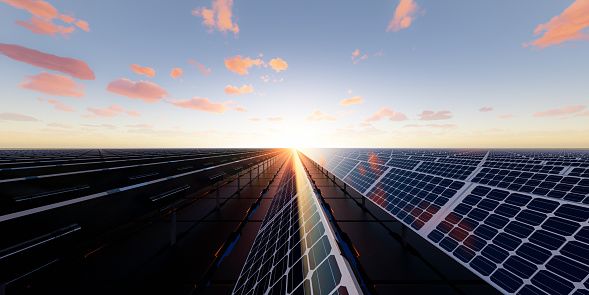Inflation Reduction Act: Powering US Climate Preparedness
President Biden signed the Infrastructure and Jobs Act – $1.2 Trillion in funds which includes $65 billion investment for power infrastructure. This unprecedented level of US government spending is aimed at accelerating the modernization of infrastructure and the low-carbon energy transformation in the US. The bipartisan passage of this bill marks an important step towards the Biden Administration’s goal to decarbonize the US power sector by 2035.
Provisions within the bill will touch on several improvements that will be important for corporations, cities, federal agencies, and schools to follow as they build their climate action and resilience strategies over the coming 5 years. Below is a non-exhaustive breakdown of some of the most interesting investments coming out of this plan, and why they matter:
Critical Aspects of the Inflation Reduction Act
- Streamlined Infrastructure Projects Under the Inflation Reduction Act. The $65 billion in funding for power infrastructure, as outlined in the Inflation Reduction Act, will help facilitate and streamline approvals and funding for large-scale transmission projects that are needed to expand renewable energy capacity in the US power generation mix and better ensure reliability across regions. Facilitating the adoption of renewables and smoother integration of intermittent power and distributed energy resources on the grid will enable a more rapid shift away from coal and natural gas.
- Building out electric vehicle (EV) charging infrastructure. The Inflation Reduction Act allocates $7.5 billion toward building a national network of vehicle charging infrastructure, which may help encourage and expedite the adoption of electric vehicles in the US, reducing the demand for fossil fuels in the long-term. Better access to charging stations will facilitate long-distance travel, helping to overcome ‘range anxiety’ for potential EV customers, and making the transition to electric fleets logistically more feasible. An additional $5 billion is dedicated for low-carbon and zero-emission school buses.

Exchange Decarbonization Ideas
Join the Zeigo Network and get decarbonization advice from other industry-leading corporations.
Join Now- Energy efficient buildings. Through electrification and energy efficiency efforts, buildings are one of the easiest-to-abate sectors and have many levers to pull to reduce their carbon footprint. According to the DOE, commercial buildings consume 35% of electricity used in the US and are responsible for 16% of CO2 emissions, but up to 30% of this energy used is wasted on average. Investing in decarbonization through a number of provisions in the new bill will facilitate energy efficiency projects, performance contracting, and retrofits needed in US schools, commercial spaces, and residential buildings.
- Resiliency. Dedicated investment in resilient infrastructure will help the nation adapt to the inevitable impacts of climate change and respond to extreme weather events which are already causing infrastructure damage, loss of life, and interrupted operations. $7 billion will go to flood mitigation and $1 billion will fund the FEMA Building Resilient Infrastructure and Communities program, which supports states and localities in pre-mitigation projects from disasters such as microgrids. Of the power and grid investments, grants of $5 billion and $3 billion will go toward enhancing grid resilience and upgrading distribution systems to integrate distributed energy resources. These provisions of the bill will also support President Biden’s recently announced PREPARE plan for climate change adaptation.
- Aiding Nuclear Plants Through the Inflation Reduction Act. $6 billion in funds are for the DOE to administer aid to nuclear plants that are at risk of early closure. Due to the inability to compete with cheaper generation, which often includes intermittent sources like wind and solar, several nuclear facilities in the US have been at risk of closure. Enabling these plants to potentially remain open longer may improve reliability in some regions, which may, in turn, reduce power price volatility. Nuclear power can also bridge the gap in the transition to a low-carbon power generation system as a zero-emission source of baseload power.
- Tax Credit Investment.The IRA expanded the list of eligible technologies, with 11 new tax credits available across a variety of Energy Transition asset classes. Another big change was an increase in value, with the PTC and ITC back to ‘max values,’ plus adders. Credits are now transferrable (once) for the first time. These changes add liquidity to the market while simultaneously simplifying the transaction.
While the passage of the Inflation Reduction Act is a huge win for US power infrastructure for climate adaptation, there is yet more to be done on climate change mitigation measures.. Still forthcoming is the Biden Admin’s “Build Back Better” budget reconciliation package of up to $1.75 trillion, which would also include significant energy-related funding, but is still under review. With $555 billion earmarked for climate and clean energy funding, the passage of this plan would result in an extension of tax benefits for utility-scale and residential clean energy, transmission, and storage projects, and provide additional incentives for electric vehicle adoption.
The United States’ transition to a cleaner, more resilient electric grid will help the power infrastructure meet businesses where they are at in the low-carbon transition. Many companies have voluntarily pursued the adoption of renewables to power their operations and have supported the addition of thousands of megawatts of new renewable energy to the grid. We are now at a tipping point, where existing infrastructure needs to catch up with investment in new clean technologies to continue to operate smoothly and reliably, and this bill will go far in addressing this issue.
For businesses, this push for sustainable infrastructure will likely improve access to renewable electricity to decarbonize operations and may put a microscope on how businesses contribute (or fail to contribute) to the US energy transition. Staying close to challenges and opportunities and the global energy and sustainability market is more important than ever.
This article originally appeared on Schneider Electric’s Perspectives blog.
See Original Post